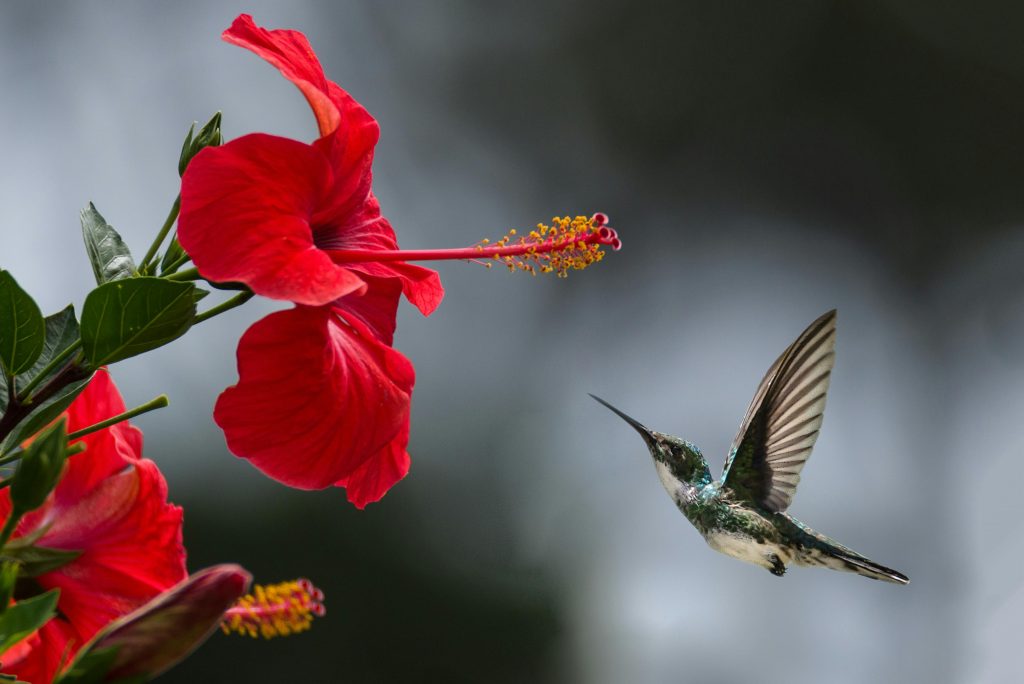How To Build A Sustainable Backyard Garden
There are a lot of benefits to building a sustainable backyard garden. Not only is it great for the environment, but it can also be a major source of pride and an invigorating hobby. As a bonus, once you have the garden up and running, it can be a real money saver. But where do you begin? Well, that is where we come in. In this article we are going to share some useful tips for building a sustainable backyard garden of your very own.
Contents
Managing Waste
One of the most important steps, if not the most important step, when it comes to building a sustainable backyard garden is what you are going to do with waste. While this may not be possible right at the start, your ultimate goal is going to be to build a zero-waste garden. This aligns with the principles of Sustainable Farming, where everything your garden produces, including lawn trimmings, leaves, cut branches, and other waste, is reused in some way to minimize waste.
To accomplish this, you are going to want to look into things like composting vegetable and fruit scraps, learning to use grass clippings and dead leaves for fertilizer or mulch, and using dead/dying plants to begin planting new ones.
Sustainable and All-Natural Pest Control
One of the banes of any sustainable garden is going to be pests. But at the same time, if you are looking to build a natural garden, the last thing that you are going to want to do is start using chemical pest control methods. Instead, you want to familiarize yourself with the various all-natural pest-control methods out there. There are a couple of different methods, but for the best sustainable garden, you are going to want to do as many at once.

To start, try making an all-natural bug killer out of things like chili oil or garlic oil. Additionally, look up what kind of pests are common in your area and then look up the corresponding flower that can be used to attract and divert those pests away from your more valuable plants. Each pest has a type of flower or plant that it tends to gravitate towards (sunflowers are a great anti-pest flower), so make sure you are doing your research.
Learn How to Repurpose Wood
Wood, whether it be from furniture, cabinets, wooden pallets, or discarded lumber, is an absolutely great tool for use in a sustainable backyard garden. It also has the unfortunate distinction of being one of the things that people throw away far too often. While not every single piece of scrap wood is going to be usable in your backyard garden, there is a good chance that a lot of the wood that you are throwing away could be used to help make your sustainable garden that much more sustainable and self-sufficient. Wooden structures can often be repurposed to serve as seedbeds or made into something that can hold plants or soil.
Another great use for leftover wood is wood chips, which are great for lining a garden. Rather than buying wood chips constantly, just invest in something like a small gas powered chainsaw (here is a review article detailing some of the best ones in the market), and you can make your own wood chips or other wooden pieces for your garden.
Start Saving Good Scraps for Composting
This one may seem obvious (and in some places it may even be legally mandated), but if you haven’t setup a compost bin yet, then you are going to want to make that one of the first things that you do when setting up your sustainable backyard garden.
Some of the best fertilizer you are going to get is going to come from broken down food scraps, especially the scraps of fruits and veggies (this simulates what would happen in nature as fruits and vegetables would naturally fall into the soil and decay). Compost bins are easy to get setup, just buy some specialty bags and get used to depositing using food scraps into there instead of the garbage. Compost can be safely stored out of the way until you are ready to start using it.
Birds are Great for Your Garden

On the same note, if you haven’t already, consider finding some ways to attract birds to your sustainable garden. While birds can sometimes be a bit annoying, they serve a couple of very good reasons why you want to attract them to your sustainable garden. First off, birds are amazing at pest control; plenty of birds feast almost entirely on different types of bugs (woodpeckers are a great example) so they can help with getting rid of garden-ruining pests. Secondly, birds are a natural part of the ecosystem, and they can help do things like spread seeds around, which encourages more plant growth. So, if you haven’t already, consider installing a few bird feeders in your garden.
Learn About Smart Water Usage
Another key component of any good sustainable garden is using water effectively. Depending on where you are, this may even be a legal requirement as water shortages require some places to be very strict on water usage for gardens.
To start, buy a rain gauge so you can measure exactly how much rainfall is occurring in your area per week. Plants and gardens need less water than people think (only about 1 inch of water on average), so you want to avoid over-watering if possible. If you do need to water the garden yourself due to a lack of rain, then you are going to want to look at the various sustainable ways to water a garden. This includes using stored rainwater, using greywater, and setting up watering devices like sprinklers to minimize water wastage.
Plan What You Plant
It may seem obvious in hindsight, but one of the keys to a really good sustainable garden is to thoroughly plan out what you are going to plant. This is even more true if you are planning to make your sustainable garden a year-round fixture. The idea here is that different plants, fruits, and vegetables are all going to start growing and eventually bloom or mature at different times throughout the year. So, you want to make sure that you really plan out what you are planting, so that there is both always something growing and something blooming or maturing. This is crucial for helping to keep your sustainable garden alive and flourishing all year.
Likewise, you really want to plan out what you are planting to try and minimize the need to buy new seeds or plants. Try to fill your sustainable garden with as many seed-producing plants as possible, so that you can essentially “re-use” plants by just planting the seeds every growing cycle.
Attract Pollinators

If you are at all into gardening, then you have probably heard about the importance of planting a “bee-friendly” garden. While the threat to the bee population has receded by quite a bit, it is still important for any good sustainable garden to be attractive to pollinators. Not only does this help the local area, but it also helps your garden. The presence of pollinators (which includes more than just bees) helps to encourage healthy plant growth. To attract pollinators, look for local plant species that are really rich in nectar.
Understand That Not Everything Has To Be Neat
When we think of a garden, we typically think of something that is really neat and perfectly manicured. Now, this is true for your typical garden, but if you are aiming for a truly sustainable garden, then you will want to take a different approach. A lot of things like an overgrown lawn can actually be really healthy for not only the lawn itself, but also plants around it. The same goes for plants in general. Avoid the desire to prune and cuts things like overgrown leaves unless absolutely necessary.
That being said, sometimes you are going to have to do some basic upkeep on your sustainable garden, which leads to our next point.
Cutting and Pruning
Building a sustainable garden isn’t all just about planting things, sometimes you have to remove things as well. Harmful plants and other structures (like overgrown bushes, tree branches, etc.) can provide a place for annoying pests to grow or they can interfere with your garden in other ways. Eventually, you are going to have to do some cutting and pruning. While a good pair of garden shears will go a long way, many times you are going to need a bit more power. For a good sustainable garden, a small chainsaw from Tool Tech Tidbits can be really helpful for letting you get some serious cutting power without having to lug around a bulky chainsaw.
Conclusion
Building a sustainable garden is not only a fun hobby, but it can also save you money in the long-run and be a tremendous source of pride for you and your family. Adding Sustainable Energy and Water Features for a Greener Backyard is an excellent way to boost your garden’s eco-friendliness and efficiency. We hope that this brief article has provided some useful tips that will help you start your journey towards building a sustainable garden.

